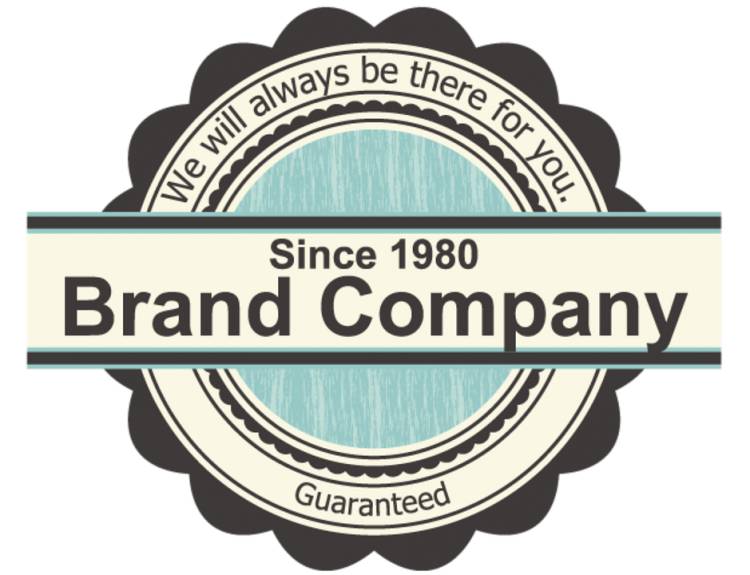RIGHTS OF A TRADEMARK HOLDER
A trademark is a vital asset that provides businesses with a distinct identity in the marketplace by distinguishing their goods or services from competitors. The holder of a trademark enjoys exclusive rights that empower them to prevent unauthorized use, seek legal remedies against infringement, and protect the goodwill associated with their brand. This article delves into the key rights of a trademark holder, including exclusive usage, the right to license, transfer, and renew the mark, and the ability to enforce legal actions. It also discusses the significance of trademark rights in fostering fair competition and maintaining brand reputation, along with the challenges trademark holders face in the global and digital economy.

Introduction
Trademarks are essential elements of modern commerce, representing the identity of businesses through symbols, words, logos, or designs. A trademark serves not only as a marker of the origin and quality of goods or services but also as a critical tool for building brand reputation and customer trust. Once a trademark is registered, the trademark holder obtains a range of exclusive rights that enable them to control the use of their mark and prevent unauthorized parties from exploiting it.
In a competitive marketplace, these rights play a pivotal role in ensuring that consumers can identify genuine products or services associated with a particular brand. Unauthorized use of a trademark can dilute the brand's value and lead to consumer confusion, which is why trademark holders are empowered with various legal protections. This article provides an in-depth analysis of the key rights enjoyed by a trademark holder and how these rights contribute to brand protection, business growth, and fair market practices.
The Right to Exclusive Use
The fundamental right of a trademark holder is the exclusive right to use the mark in connection with the goods or services for which it is registered. This exclusivity ensures that no other business can use the same or a similar mark in a way that could cause confusion among consumers.
- Example: A registered trademark for "Delta" in the airline industry prevents other airline companies from using the same name or a confusingly similar one.
- This right applies not only to the use of the mark on physical products but also to advertising, packaging, and online platforms.
Trademark holders can also use the ® symbol to signify that their mark is registered, while unregistered trademarks are often indicated by the ™ symbol.
2. The Right to Prevent Unauthorized Use and Infringement Actions
One of the key rights of a trademark holder is the ability to prevent unauthorized use of their mark through legal actions. If another party uses the mark without permission or in a way that confuses consumers, the trademark holder can file for trademark infringement.
- Infringement Remedies:
- Injunctions: Courts can issue orders preventing the infringer from further using the mark.
- Damages or Profits: The holder can seek monetary compensation for losses caused by the infringement or recover profits made by the infringer.
- Destruction of Infringing Goods: Courts may order the destruction of products bearing the infringing mark.
- Dilution Protection: Trademark holders of well-known or famous marks enjoy protection from dilution, which refers to the weakening of the distinctiveness of a mark even when there is no direct competition or consumer confusion.
- Example: A famous brand like "Coca-Cola" can act against unrelated businesses using similar names to protect the brand’s identity and prestige.
3. The Right to License the Trademark
Trademark holders have the right to license their mark to third parties, allowing them to use the trademark under specified terms and conditions. Licensing is a common practice that enables businesses to expand their brand presence without directly engaging in production or retail operations.
- Types of Licenses:
- Exclusive License: Grants the licensee exclusive rights to use the mark, often prohibiting the trademark owner from using it themselves within the specified territory or industry.
- Non-exclusive License: Allows multiple licensees to use the mark while the trademark owner retains the right to use it.
- Control and Quality: Trademark holders must maintain quality control over the licensed products or services to ensure that the use of the mark aligns with the brand’s standards and reputation.
4. The Right to Transfer or Assign the Trademark
Trademark holders can transfer ownership of their mark through an assignment. This right allows them to sell or assign the trademark to another party, either with or without the underlying business. Assignments can be total (full ownership transfer) or partial (limited to certain goods, services, or territories).
- Example: A company that sells a product line under a specific trademark may assign the trademark to another business that takes over the production and marketing of that product line.
- Recordation: In many jurisdictions, assignments must be recorded with the trademark office to ensure legal validity and transparency.
5. The Right to Renew the Trademark
Unlike other forms of intellectual property, such as patents, trademarks can be renewed indefinitely, provided the holder continues to use the mark in commerce and meets renewal requirements. The typical renewal period is every 10 years, although this can vary depending on jurisdiction.
- Benefits of Renewal:
- Maintains the holder’s exclusive rights over the mark.
- Prevents the trademark from becoming abandoned or cancelled.
- Ensures that the mark retains value as a business asset.
Trademark holders must monitor renewal deadlines closely to avoid losing their rights and having the mark enter the public domain or be cancelled for non-use.
6. The Right to Protection in Foreign Jurisdictions
Trademark holders often seek international protection to safeguard their rights across borders, especially if they operate or plan to expand into foreign markets. While trademarks are territorial and must be registered in each country, several international agreements facilitate trademark protection across multiple jurisdictions.
- Madrid Protocol: Allows trademark holders to apply for international registration through a single application.
- Paris Convention: Provides protection for trademarks by offering priority rights to applicants in member countries.
International trademark protection is crucial in the digital economy, where brands often face challenges from counterfeiters and unauthorized online use.
7. The Right to Build and Protect Goodwill
A trademark is closely linked to the goodwill and reputation of the business it represents. Trademark holders have the right to build, protect, and enhance this goodwill by ensuring that their brand is associated with quality and reliability.
- Opposition Proceedings: Holders can oppose the registration of similar marks by other parties that may dilute their brand or cause confusion.
- Domain Name Protection: Trademark holders also have the right to protect their brand in the digital space by preventing cybersquatting—the unauthorized registration of domain names containing their trademark.
Goodwill is a valuable intangible asset, and protecting it ensures that consumers continue to associate the trademark with positive experiences and trust.
8. Challenges Faced by Trademark Holders
Despite the comprehensive rights available to trademark holders, they face several challenges in protecting their marks effectively:
- Counterfeiting: The rise of counterfeit goods in both physical and online markets poses significant threats to trademark holders.
- Global Enforcement: Enforcing trademark rights across multiple jurisdictions can be complex and costly.
- Trademark Squatting: In some countries, individuals register well-known foreign trademarks without authorization, forcing legitimate holders to engage in lengthy legal battles.
- Digital Infringement: Social media platforms and e-commerce websites have made it easier for infringers to misuse trademarks, requiring constant vigilance from trademark owners.
Conclusion
The rights of a trademark holder are essential for protecting the unique identity of a brand and ensuring fair competition in the marketplace. Trademark holders enjoy exclusive rights to use, license, transfer, and renew their marks, giving them control over how their brand is represented and used. These rights also empower trademark holders to take legal action against infringement and prevent unauthorized use that could harm their reputation and goodwill.
While the global and digital economy presents new challenges, trademark law continues to evolve to meet the demands of modern commerce. International frameworks like the Madrid Protocol and vigilant enforcement mechanisms are vital for ensuring the effective protection of trademark rights worldwide. Ultimately, trademarks play a crucial role in building customer trust and fostering business growth, making it imperative for businesses to understand and exercise their trademark rights proactively.
This article highlights the rights of a trademark holder and the importance of these rights in maintaining brand identity and protecting intellectual property. As businesses face evolving challenges in the marketplace, robust trademark protection remains essential for fostering innovation, consumer trust, and market integrity.












